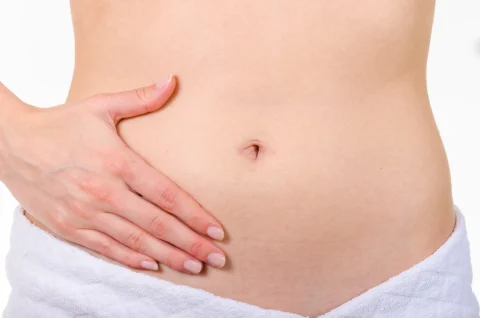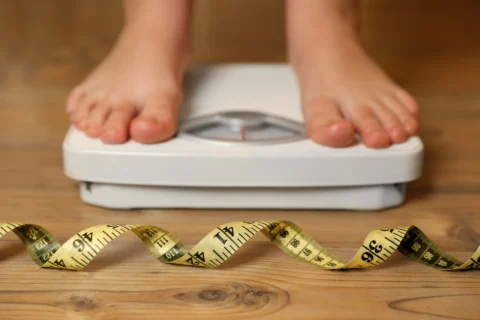Could Your Symptoms Be Returning? What to Know About Hormone Pellet Wear-Off
Understanding the symptoms of hormone pellets wearing off and working closely with your healthcare provider allows for proactive management and helps ensure continued relief from hormone-related issues.
If you’ve found relief from hormone-related issues with hormone pellet therapy, you know the feeling of renewed energy, balanced mood, and overall well-being.
While hormone pellet therapy is an effective treatment for many, it’s important to be aware that the effects are not permanent. What happens when that feeling starts to fade?
This article will help you understand the symptoms of hormone pellets wearing off and what you can do to manage the transition effectively.
What Is Hormone Pellet Therapy?
Hormone pellet therapy is a form of bioidentical hormone replacement therapy (BHRT) that involves the subcutaneous insertion of tiny pellets containing hormones like estrogen or testosterone. These pellets slowly release consistent doses of hormones over several months, providing long-term relief from symptoms associated with hormone imbalances such as menopause, low testosterone, or thyroid issues.
What Are the Symptoms of Hormone Pellets Wearing Off?
As hormone pellets wear off, your body begins to revert to its pre-treatment state, leading to the return or worsening of symptoms you experienced before the pellets were inserted. Here’s a breakdown of the most common signs:
- Fatigue & Energy Levels: You might feel increasingly tired, lacking the energy to complete your daily tasks as before. This fatigue can be felt both physically and mentally.
- Mood Fluctuations: Hormone imbalances can significantly affect your mood. You may find yourself more irritable, easily frustrated, anxious, or prone to mood swings and sudden shifts in emotions.
- Sleep Disturbances: The decline in hormones can disrupt your sleep patterns. You might find it difficult to fall asleep, experience frequent awakenings throughout the night, or wake up feeling unrefreshed and fatigued.
- Return of Menopausal Symptoms: For women, hot flashes, night sweats, and vaginal dryness are common symptoms of menopause that may return or intensify as the effects of the hormone pellets fade.
- Decreased Libido and Sexual Concerns: Changes in hormone levels, particularly testosterone, can suppress sex drive and make it more difficult to achieve arousal or orgasm. Both men and women can experience these changes.
What Are the Side Effects of Hormone Pellets Wearing Off?
In addition to the return of your original symptoms, you might experience further side effects specifically related to the changing hormone levels:
- Headaches and Migraines: Fluctuations in hormones, especially estrogen, can trigger headaches. If you’re prone to migraines, they might worsen as your hormone pellets wear off.
- Digestive Upset: The shift in hormone levels can disrupt your digestive system, resulting in bloating, constipation, diarrhea, or general discomfort.
- Appetite Changes: You might notice an increase or decrease in appetite as your body adjusts to declining hormone levels. These changes could also lead to fluctuations in weight.
- Additional Concerns: Other possible side effects include joint pain, hair loss, or skin changes.
Can Hormone Pellets Fall Out, and How Common Is It?
While it’s uncommon, hormone pellets can sometimes become dislodged or expelled from the insertion site. This is more likely to happen early on, when the healthcare provider is still gaining experience with the insertion procedure. Signs that a pellet may have fallen out include:
- Localized Tenderness or Bruising: You may experience some discomfort or bruising around the insertion site.
- Feeling the Pellet: It might be possible to feel the pellet just under the skin if it has migrated.
What to do if a pellet falls out: Contact your healthcare provider immediately if you suspect a pellet has fallen out. They will assess the situation and determine if a replacement is needed.
Do Hormone Pellets Make You Feel Worse When They Wear Off?
As your hormone levels decrease, you may temporarily feel worse than you did before starting pellet therapy. This is because your body has become accustomed to the higher hormone levels provided by the pellets. However, this feeling is usually temporary and should subside once your next set of pellets is inserted.
Why Might Hormone Pellets Wear Off Sooner Than Expected?
Several factors can influence how quickly your hormone pellets wear off:
- Individual Metabolism: Everyone metabolizes hormones at different rates.
- Physical Activity Level: Increased physical activity can lead to faster hormone depletion.
- Body Weight: Changes in body weight can affect hormone distribution and metabolism.
- Stress: High stress levels can impact your body’s hormone regulation.
What Happens When Hormone Pellets Are Not Working As Intended?
Sometimes, hormone pellet therapy might not provide the expected results. Here are some signs that your pellets may not be working as intended:
- Symptoms Don’t Improve: If you continue to experience symptoms despite pellet therapy, your dosage may need adjustment.
- Symptoms Worsen: An unexpected worsening of symptoms might indicate a need to re-evaluate your hormone therapy.
- No Change in Hormone Levels: Lab tests that show little or no change in hormone levels suggest your pellets might not be releasing the hormones effectively.
If any of these occur, don’t hesitate to contact your healthcare provider for further evaluation.
How Does Depression Manifest When a Hormone Pellet Wears Off?
Hormonal fluctuations, particularly those involving estrogen and progesterone, can significantly impact mood and mental well-being. When your hormone pellets wear off, and your hormone levels begin to decline, you may experience symptoms of depression, including:
- Loss of Interest or Pleasure: A lack of motivation or enjoyment in activities you once found pleasurable.
- Changes in Appetite or Sleep: Significant changes in eating patterns, either increased or decreased appetite, or difficulty sleeping or sleeping excessively.
- Psychomotor Agitation or Retardation: Feeling restless and agitated or sluggish and slowed down.
- Fatigue or Loss of Energy: A persistent feeling of tiredness that interferes with daily activities.
- Feelings of Worthlessness or Guilt: Excessive self-criticism or feelings of worthlessness.
- Difficulty Concentrating or Making Decisions: Struggles with focus, memory, or decision-making.
- Recurrent Thoughts of Death or Suicide: If you experience these thoughts, please seek immediate professional help.
It’s important to understand that depression can be caused by various factors, not just hormone imbalances.
However, hormonal fluctuations can worsen pre-existing depression or trigger depressive episodes. If you experience any of the above symptoms after your hormone pellets wear off, discuss them with your healthcare provider. They can help determine if your depression is related to hormonal changes and recommend the most appropriate treatment course.
How Long Until Hormone Pellets Typically Wear Off, and What Next?
The duration of effectiveness for hormone pellets can vary depending on several factors, including:
- Type of Hormone(s) Used: Estrogen pellets typically last 3-4 months, while testosterone pellets may last 5-6 months.
- Dosage: The amount of hormone in each pellet will influence its longevity.
- Metabolism: A faster metabolism can lead to quicker hormone depletion.
- Weight: Body weight can affect hormone distribution and metabolism.
- Activity Level: Increased physical activity can burn through hormones faster.
In general, hormone pellets typically last 3-6 months. Here’s what to expect after that timeframe:
- Monitoring and Follow-Up: Around 4-6 weeks after your initial pellet insertion, you’ll likely have blood drawn to assess your hormone levels. Your healthcare provider will discuss the results with you and potentially adjust the dosage for subsequent insertions.
- Refilling Your Pellets: Once your current pellets wear off, you’ll need to return for a new insertion, usually on the opposite side of the body from the previous insertion site.
- Ongoing Communication: Maintaining open communication with your healthcare provider is crucial throughout your hormone pellet therapy journey. This allows for adjustments in dosage or treatment plans based on your individual needs and responses.
Final Thoughts
Understanding the signs and symptoms of hormone pellets wearing off empowers you to take an active role in managing your health.
By being aware of the potential changes, you can work with your healthcare provider to maintain optimal hormone balance and enjoy continued symptom relief.
Remember, individual experiences can vary. Don’t hesitate to discuss any concerns or questions you have with your healthcare professional. They can guide you through the process and tailor a treatment plan that best suits your unique needs.










